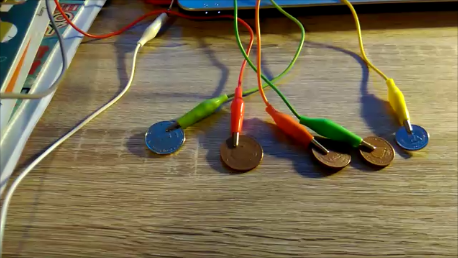It's all in the details
The more I watch my students play this game, the more I
realise there are so many different kinds of data I could have collected. Just
because 2 people got the same score doesn’t mean that they got there the same
way. The score doesn’t take into account how many mistakes they made or how
quickly they were able to identify the notes and progress between the levels. It
doesn’t show the way that their motivation went up and down in relation to
right and wrong answers or the way that some of them seemed to be able to
recognise certain intervals immediately whilst others they couldn’t work out at
all. It also doesn't show how my actions influenced their scores. I was able to make a note of some of these things along the way, but there
were so many details I missed because I didn’t have time to write down all my
observations during the lessons. This project is supposed to be just an
introduction to action research and to using technology in music education and
the write up will be just 2000 words but if I was doing this again as a bigger
research project I would video each person each time they play the game in
order to capture all these details.
I was especially interested in how they responded to the 2nd
level where they hear the note D and one other note and have to identify what
that other note is. As I have mentioned in a previous post I have not spent
time with my students teaching them to recognise intervals so this was a pretty
new challenge for most of them. What fascinated me was that some of them seemed
to have a natural ability to identify some of the notes. By this I mean that as
soon as they heard the note they knew what it was.
One of my students seemed to have a natural ability to hear
G, A and B. The other notes she found harder to recognise and had to think and
sing before answering the question. When I asked her how she could recognise
those 3 notes so quickly she said ‘well it’s just obvious what they are!’ Another
student could always hear G and when I asked her how, she said it had a special
sound gave her a certain feeling inside. Another could always hear B, but
couldn’t explain why. Although these 3 students had certain notes they could identify
immediately, they still needed time to identify the other notes. I wonder why
this is? What is it about those notes that they remembered? What connections are they making?
Some students found the whole concept of recognising
intervals hard to grasp and even when I sang for them and showed them by
counting on my fingers how many notes I had sung they still couldn’t get it.
Perhaps I shouldn’t be surprised as it is the first time that many of them
have encountered these kind of questions. I am sure if we carry on with the
game for a few more weeks they will start to understand and be able to play
without my help. For
this kind of aural training to be effective it can’t just be used as and
when. Time needs to be allocated regularly to using the game.[1] Strangely one of the students who struggled the most, although a beginner violinist, has been learning piano and attending solfege lessons every week for 3 years. I wonder what she has learnt during those lessons?



Comments
Post a Comment